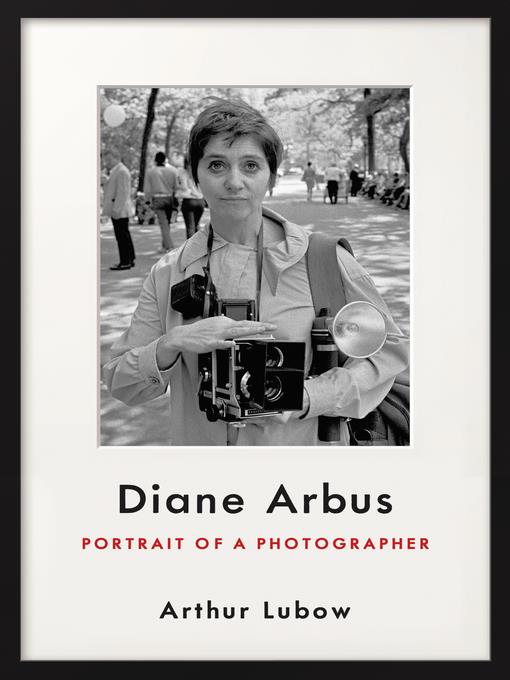
Diane Arbus
Portrait of a Photographer
کتاب های مرتبط
- اطلاعات
- نقد و بررسی
- دیدگاه کاربران
نقد و بررسی

Starred review from April 11, 2016
With 12 years of scrupulous research and a critic’s eye, Lubow turned a routine magazine assignment for the New York Times into the defining biography of photographer Diane Arbus, whose portraits of twins, circus freaks, and transvestites, among many others, established her as one of the leading artists of the 20th century. With few exceptions, Arbus’s preferred subjects were “the obscure over the celebrated, victims of power over its agents.” Lubow follows her life from her birth into an upper-class Jewish family in N.Y.C. in 1923; through her early marriage and subsequent fashion photography partnership with her husband, Allan; to the birth of their two daughters and their later divorce; and finally to her solo career with its monographs and museum exhibitions. The book explores how Arbus’s lifelong depression, an incestuous relationship with her poet brother, other damaging love affairs, and ongoing financial distress may have led to her suicide at age 48. Relying primarily on interviews with friends, lovers, and colleagues, as well as Arbus’s previously unavailable correspondence, Lubow provides not only a comprehensive assessment of her groundbreaking work but, perhaps more significantly, a revealing documentary of Arbus’s often-tortured life. The biography’s only flaw is the lack of Arbus’s photos (the estate denied access); Lubow is forced to rely on wordy descriptions and exhaustive citations. But fans of her work will have no trouble calling up the iconographic portraits from their personal memory banks. And as Arbus frequently acknowledged, “The subject... is always more important than the picture.” Agent: Elyse Cheney, Elyse Cheney Literary.

June 15, 2016
Photographs by Diane Arbus (1923-71)of marginalized people or "freaks" in the 1960s and early 1970s revolutionized photography and made her a hugely influential artist. Lubow's massive biography chronicles Arbus's life--from her privileged childhood in New York City to her early marriage to and photography business with Alan Arbus, and finally her development into a passionate and serious photographer. Lubow, who writes for the New York Times and The New Yorker, thoroughly researched and interviewed Arbus's family as well as her most intimate acquaintances from childhood until her suicide at age 48. He confirms the Arbus "mystique" that has continued to grow since her death, including her peculiar personality, her struggle with depression, her progressive sex life, and her fascination with subcultures, such as sideshow performers, midgets, and transvestites, and how she would infiltrate their world. Although the book contains no images (the estate denied access), it does provide the backstory to many of her celebrated photographs, giving readers a special glimpse into how Arbus's photography has become the stuff of legend. VERDICT For anyone interested in the art and personal life of one of the 20th century's most important artists.--Shauna Frischkorn, Millersville Univ., PA
Copyright 2016 Library Journal, LLC Used with permission.

Starred review from April 15, 2016
Photographer Diane Arbus (1923-1971) was addicted to danger, sex, and human oddities.Arbus left a huge legacy of prints, contact sheets, journals, appointment diaries, unpublished writings, and letters. Unfortunately, her estate does not allow researchers access to this material, nor did they authorize publication of Arbus' photographs for this biography. Nonetheless, Lubow (The Reporter Who Would Be King, 1992), who has served as a contributing writer at the New York Times Magazine and a staff writer at the New Yorker, perceptively describes 164 images, providing information about where readers can find them published. Drawing on a huge number of interviews, related archives, and Arbus' several publications, the author produces a thorough, sympathetic portrait of a complicated woman who, from childhood on, stood out as "totally original." Arbus began her career as a fashion photographer with her husband, Allan Arbus. The couple did advertising work for Arbus' father, who owned a luxury department store, with Allan clicking the shutter and Diane staging the models. Soon, the couple got assignments for Glamour and Vogue, where their work was published alongside that of Irving Penn and Richard Avedon. Diane, though, was bored with fashion photography, and a course with Berenice Abbott inspired her interest in photography as an art. In 1953, with a Vogue press pass to photograph the circus, she became entranced by little people, who, writes the author, "were Diane's introduction to the sideshow freaks whose portraits became her trademark." "I do what gnaws at me," she told her teacher Lisette Model. Those subjects ranged from "unsparing portraits of the rich" to "grim and tawdry" sex scenes. After her marriage ended, Arbus intensified her "compulsive fervor" for promiscuous sex, which likely caused hepatitis. Although a critical success, she doubted her talents; Lubow chronicles the deepening depressions that led to her suicide. Despite limitations on research, Lubow sharply captures Arbus' restlessness, pain, and artistic vision.
COPYRIGHT(2016) Kirkus Reviews, ALL RIGHTS RESERVED.

























دیدگاه کاربران